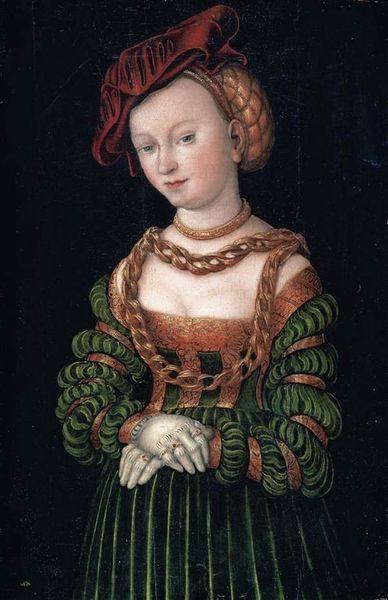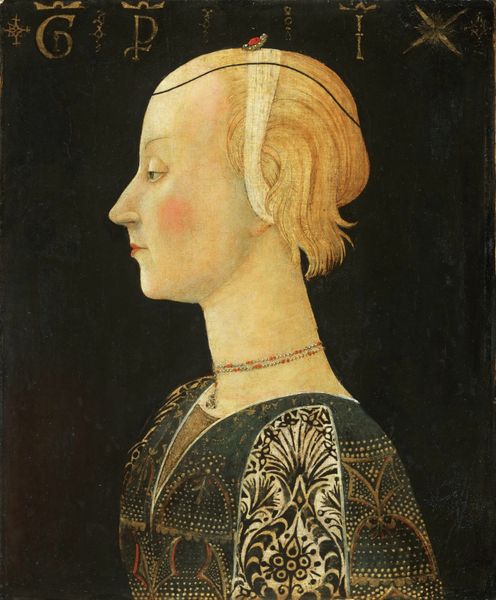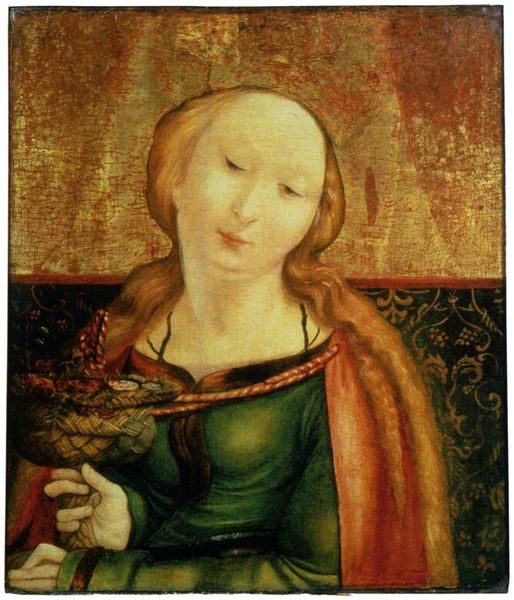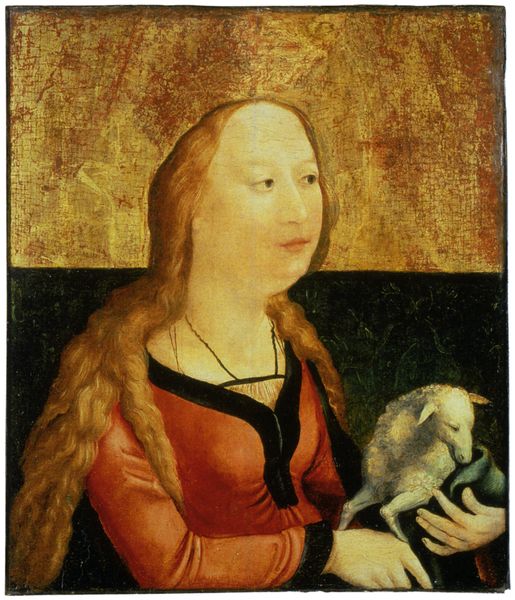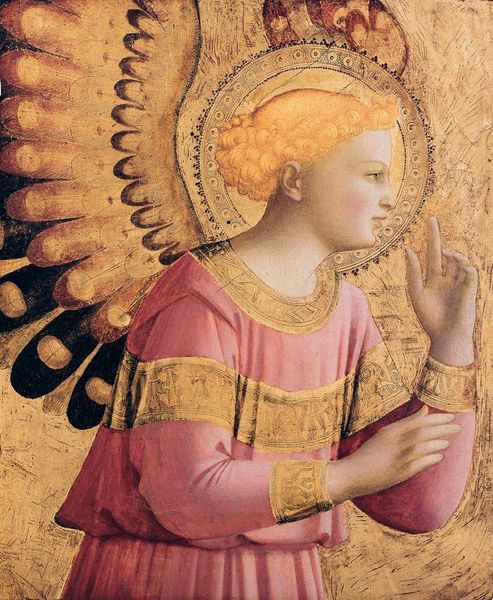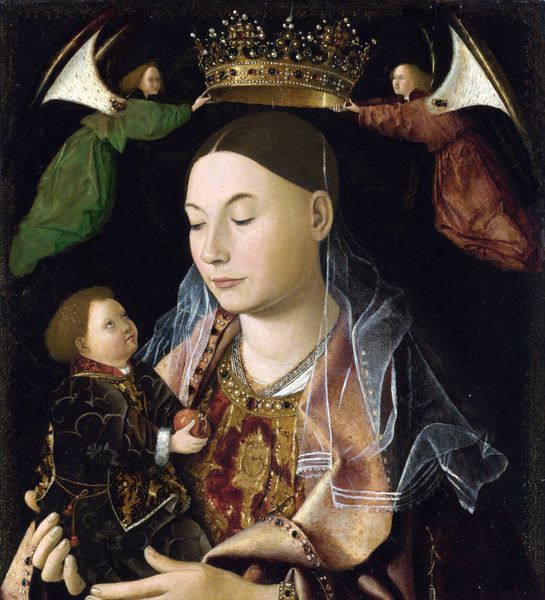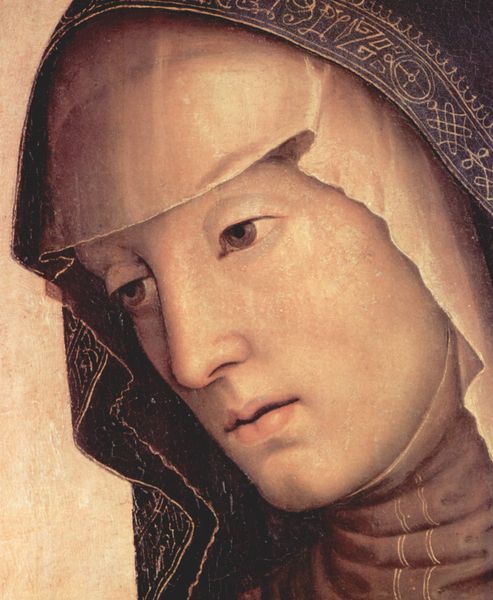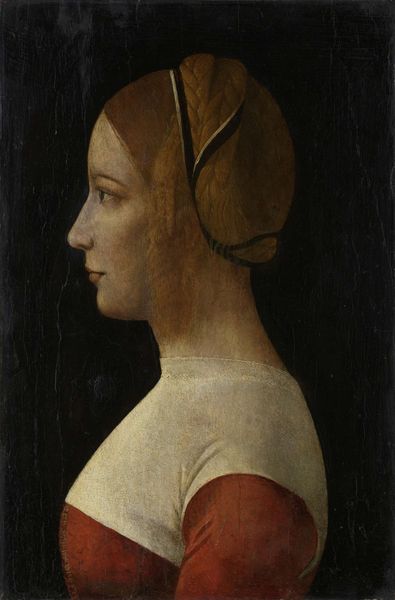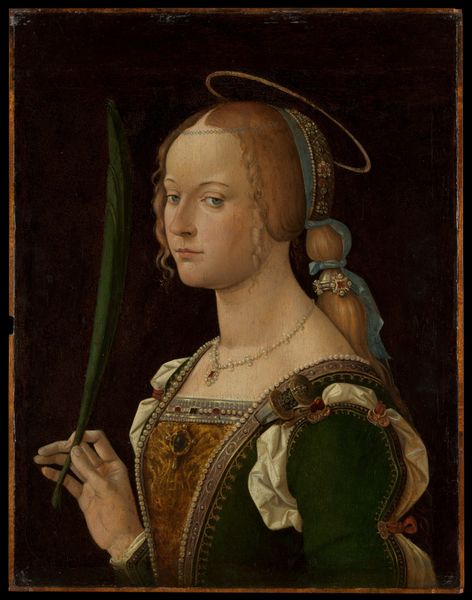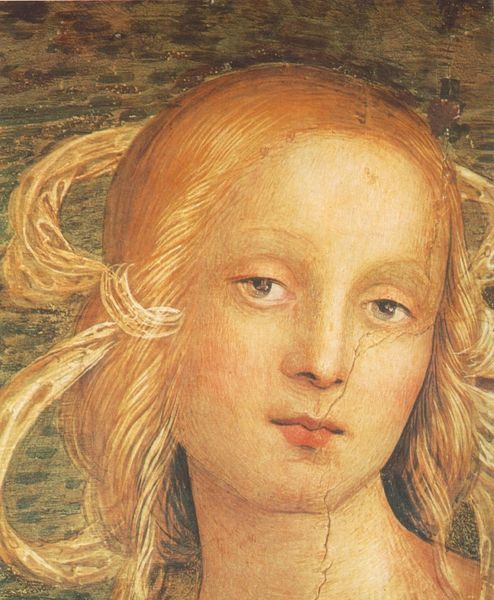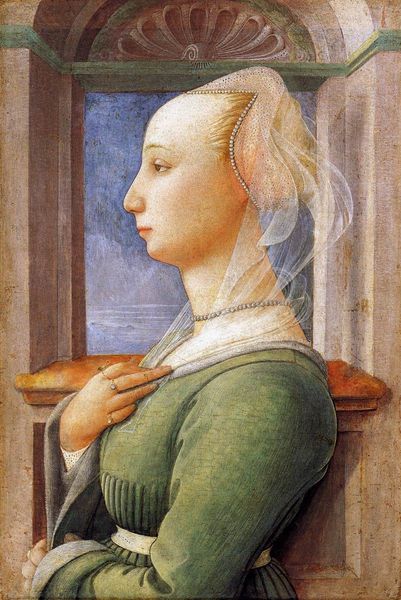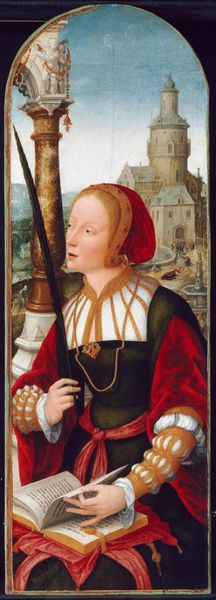
oil-paint
#
portrait
#
medieval
#
oil-paint
#
painted
#
figuration
#
oil painting
#
underpainting
#
lady
#
italian-renaissance
#
female-portraits
Dimensions: 43 x 30 cm
Copyright: Public domain
Curator: Pisanello's "Portrait of a Princess of the House of Este," painted around 1449, immediately strikes me as an exercise in graceful, almost severe, formal construction. The layering of shapes and the artist's mastery of line is remarkable. Editor: My first thought is how timeless she looks, despite the obvious markers of her era. The butterflies and stylized flowers give the portrait a dreamlike, symbolic quality. Curator: Precisely. The contrast between the organic forms in the background and the sharp profile of the princess creates a palpable tension. Note how Pisanello employs a limited palette – primarily muted tones, save for the red sleeves which boldly punctuate the composition. This careful colour selection serves to heighten the princess’s almost sculptural quality. Editor: The butterfly behind her head must carry some meaning. Butterflies often symbolize transformation and rebirth. The flora is no doubt symbolic, as well – heraldic, perhaps, hinting at the family's status, and the tiny bird embroidered on her sleeve. Curator: Indeed. While iconography provides insights, I'm most drawn to the way Pisanello articulates space. He flattens the picture plane, compressing the foreground and background. See, also, how the contours of her face, particularly the nose and brow, are rendered with such delicate precision. Editor: And there’s something inherently poignant about depicting someone so young, knowing her future was likely pre-determined by dynastic concerns. The symbols might speak to aspirations, both for her and for her family. It humanizes her beyond simply an ideal beauty or emblem of lineage. Curator: An astute observation. Pisanello creates not only a likeness but a distillation of idealized form, line, and controlled compositional space that speaks to the artistic values of his time. Editor: And in her stylized serenity, perhaps, a whisper of hope for renewal and freedom from expectation, articulated in a visual language understood then and felt still. Curator: Yes, the careful tension between line and life, symbol and surface gives Pisanello’s “Portrait” an enduring resonance far beyond a historical document. Editor: It really shows how effective portraiture goes beyond surface-level likeness, and starts reflecting the human experience in many different angles and perspectives.
Comments
No comments
Be the first to comment and join the conversation on the ultimate creative platform.

